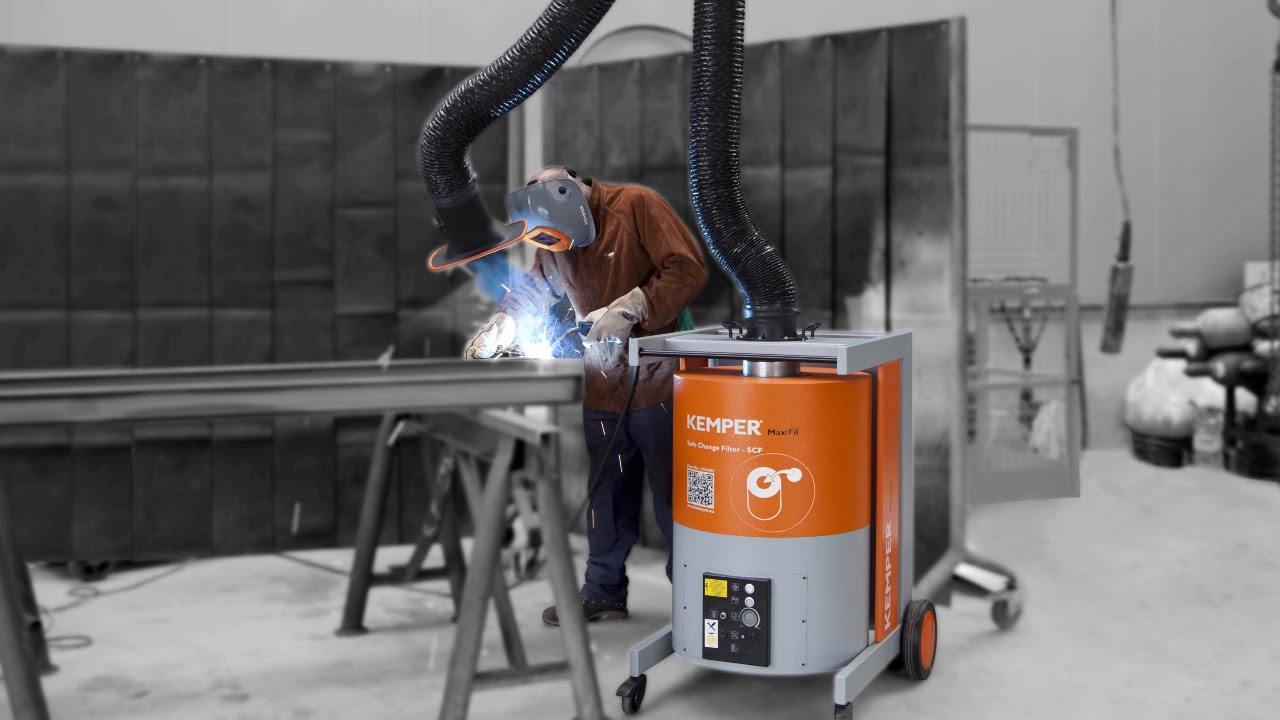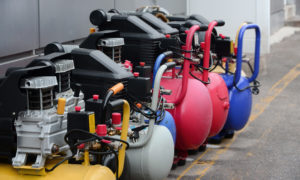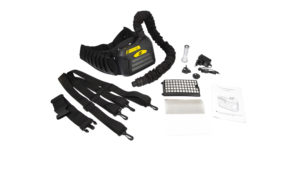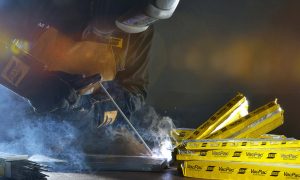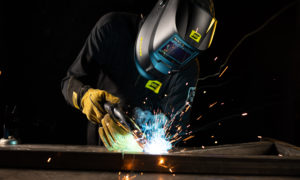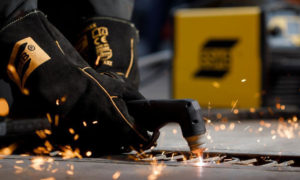What is welding fume?
Welding fumes refer to the airborne particles and gasses generated during the welding process. When welding, metals are heated above their melting point and joined together. As a result of this process, fumes are produced which can consist of solid particles and gasses. The fumes can rise and mix with the air which can be harmful if inhaled.
The exact components of welding fume can vary depending on the welding process, the material being welded, and the coatings or contaminants on the materials if any. Common particles in welding fumes may include metal particles, oxides, flux and coatings, and gasses. Metal particles can include iron, chromium, nickel manganese, copper, aluminium, and other elements present in the base metal or filler material.
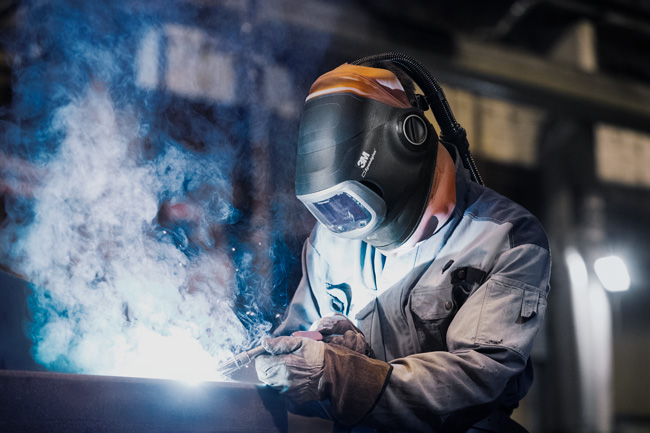
What are the health risks from welding fumes?
Exposure to welding fumes can cause serious health issues to the welder, as well as to others around the welding operation. There is new scientific evidence from the International Agency for Research on Cancer claiming that exposure to all welding fumes, including that from mild steel welding, can cause lung cancer (HSE, 2019). Some evidence also suggests kidney cancer as one of the health risks from welding fumes.
Inhaling welding fumes can lead to acute illnesses while chronic diseases can gradually develop. The Health and Safety Executive (HSE) has estimated that 40-50 welders are hospitalised each year from breathing metal fumes at work.
Chronic effects from exposure to welding fumes develop gradually leading to serious diseases such as Chronic Obstructive Pulmonary Disease (COPD), Occupational Asthma, and Asphyxiation. Certain elements present in the welding fume such as hexavalent, chromium, nickel and cobalt, can increase the risk of respiratory diseases and other adverse health conditions.
HSE Regulations
Health and Safety Executive (HSE) is a regulatory body in the UK responsible for promoting and enforcing health, safety, and welfare in the workplace. HSE introduced new regulations after the scientific evidence highlighted the serious health risks associated with exposure to welding fumes, and the Workplace Health Expert Committee endorsed the reclassification of mild steel welding fume as a human carcinogen.
HSE regulations provide guidelines and requirements for controlling and managing exposure to welding fumes to ensure the health and safety of workers. The regulatory body issued new enforcement expectations for all welding fumes, including from mild steel welding. It is understood that general ventilation does offer adequate protection and does not achieve the necessary control.
HSE issued the directives that all indoor welding activities should ensure effective engineering controls such as Local Exhaust Ventilation (LEV) to control welding fumes arising from the welding process. In cases where engineering controls are not adequate to control all welding fume exposure then adequate and suitable respiratory protective equipment (RPE) is also required to provide the required protection.
Appropriate RPE is required for all outdoor welding activities and welders must be trained on the correct use of these controls.
As there is no known level of safe exposure, HSE advises that suitable controls must be in place to protect against exposure to welding fumes regardless of the duration.
HSE has published numerous guidance sheets to help you in defining the appropriate controls. You can read HSE’s WL3: Welding Fume Control guidance that explains good control practices for various welding tasks.
Consequences of breaching HSE regulations
Failing to provide adequate protection for your workers from harmful welding fumes can result in severe consequences. The Health and Safety Executive (HSE) is a UK government regulatory body responsible for enforcing workplace safety. Breaching the health and safety regulations may result in warnings and fines. In severe cases, it can even lead to imprisonment.
LEV Testing
Health and safety laws state that employers must assess and protect their employees at work from hazardous substances such as dust, fumes, vapours, etc. If your controls include an LEV system, then it must be maintained and tested periodically (at least every 14 months). The purpose of testing is to ensure the LEV system in place is providing adequate and the
necessary protection.
You can read more about LEV testing on the HSE website: https://www.hse.gov.uk/lev/faqs.htm
What is Welding Fume Extraction?
Welding fume extraction is the process of capturing and removing contaminants generated during welding operations. When welding, the metals are heated to high temperatures which cause the release of various gasses, vapours, and particulates.
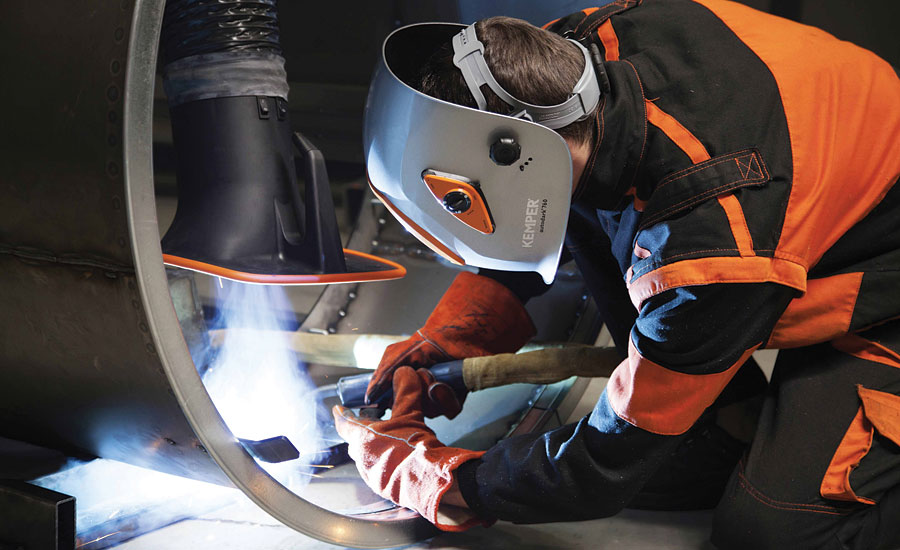
The exact composite of fumes can vary depending on factors like the welding process, material being welded, presence of coatings, etc. Generally, the particulates in a welding fume may contain metallic oxides, silicates, and fluorides. Harmful gasses in welding fumes may be carbon monoxide, ozone, and nitrogen oxides.
Welding fume extraction systems help control the risks from hazardous substances present in the welding fumes. Fume extraction systems minimise the exposure of the welders to harmful fumes. They help ensure a safe working environment for the welders and the people within the vicinity of the welding area.
To learn more, check out our Best Practice Guide on Welding Fume Extraction.
What is Local Exhaust Ventilation (LEV)?
Local exhaust ventilation (LEV) refers to the systems designed to capture and remove welding fumes generated during the welding process at the source. LEV systems are designed to extract the fumes directly from the welding torch or the immediate area where the welding is taking place. By capturing welding fumes at the source, LEV helps prevent the welder from inhaling the harmful contaminants and prevent their dispersion into the surrounding environment.
There are different types of Local Exhaust Ventilation systems including Mobile Welding Fume Extraction Units, Portable Fume Extractors, On-Torch Fume Extraction, and Centralised Extraction Systems. Choosing the right extraction system requires some assessment of the workplace, the hazardous properties, health effects, and exposure patterns.
You may want to read the HSE guide to buying and using local exhaust ventilation (LEV).
What are mobile fume extraction units?
Mobile fume extraction units are standalone LEV systems that offer flexibility due to their high mobility, making them an ideal solution for every changing workplace. They are often mounted on wheels or skids for easy mobility within a workshop and welding workstations.
Fume extraction units are equipped with disposable filters or cleanable filters to remove contaminants and particulates from the extracted air. The filtration system inside the unit will typically consist of a mechanical filter such as HEPA (High-Efficiency Particulate Air) filter or other suitable filters.
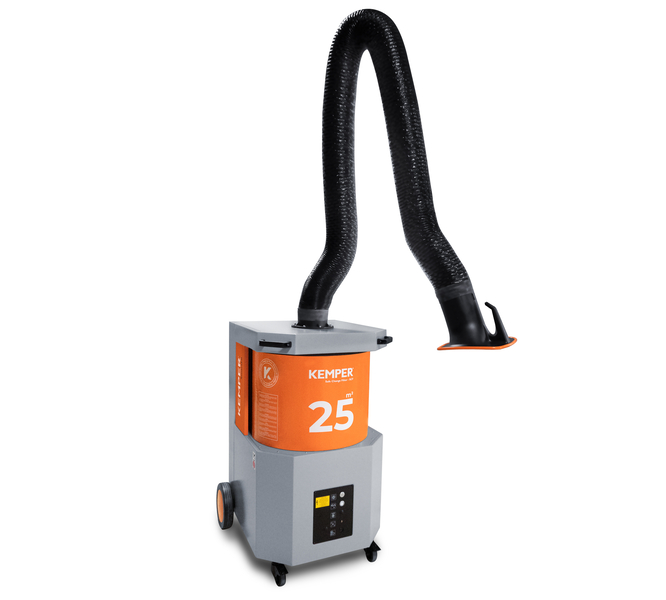
Mobile fume extraction units have a built-in fan or blower which creates a negative pressure allowing the suction of fumes via the capture hood or suction inlet into the unit for extraction. The capture hood or suction inlet that is positioned as close as possible to the welding area to capture fumes directly at the source.
Mobile fume extraction units are typically equipped with flexible welding fume extraction arms that are easy to adjust with little effort. Extraction arms are extendable, and their length may vary.
When using a mobile fume extraction unit, it is recommended that the welding area is enclosed perhaps with welding curtains to prevent drafts that will blow the fumes away from the hood.
What are portable welding fume extractors?
Portable welding fume extractors are fume extraction systems designed to capture and remove hazardous fumes and particles generated during welding processes. They are compact, lightweight, and portable units designed to be carried to the working area.
Portable fume extractors are generally not as powerful as mobile fume extraction. They typically have a lower air flow capacity, so they are ideal for temporary, maintenance welding, and low and medium-duty cycle. They are commonly used in smaller workshops, construction sites, repair shops, or other locations where welding is performed on a smaller scale.
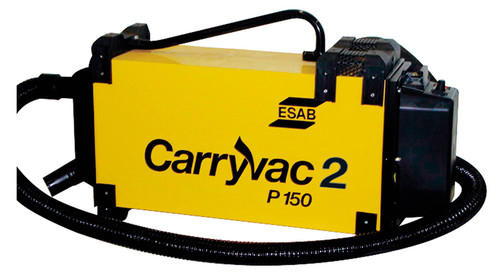
What is On-Torch Fume Extraction?
On-torch fume extraction involves a specially designed welding torch with a fume extraction system directly integrated into the welding torch. It is also known as On Torch Fume Extraction or integrated fume extraction.
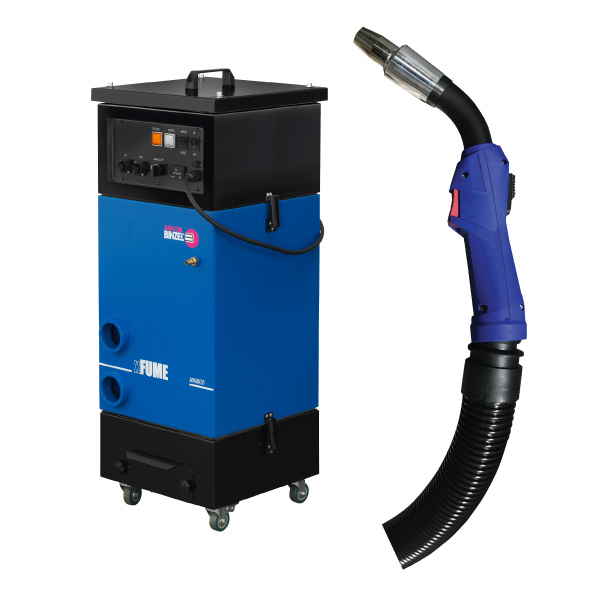
On torch fume extraction provides an effective way to capture and remove the fume at source. The fume extraction torch will have a built-in extraction nozzle or suction chamber. The suction chamber is close to the welding arc allowing it to capture the fumes directly as they are generated. The extracted fumes are then drawn through a flexible hose or extraction tube to a fume extraction unit containing a fan and a filter system.
An on-torch welding fume extraction system is preferred where other fume extraction methods may not be practical.
To learn more check out On Torch Fume Extraction vs Mobile Fume Extraction.
What is Respiratory Protective Equipment (RPE)?
Respiratory protective equipment (RPE) is a type of personal protective equipment (PPE) that is designed to protect the user from inhaling hazardous substances or airborne contaminants. It is commonly used in environments where there is a risk of respiratory hazards such as from welding fumes.
RPE consists of respirators and breathing apparatus. The respirators are equipped with filters to remove contaminants from the air being breathed in. The respirators can be non-powered or powered. Non-powered air respirators work by using the wearer’s breathing to draw air through the filter. Powered air respirators are equipped with a motor that passes air through the filter allowing the wearer to breathe clean air free of any particles or contaminants.
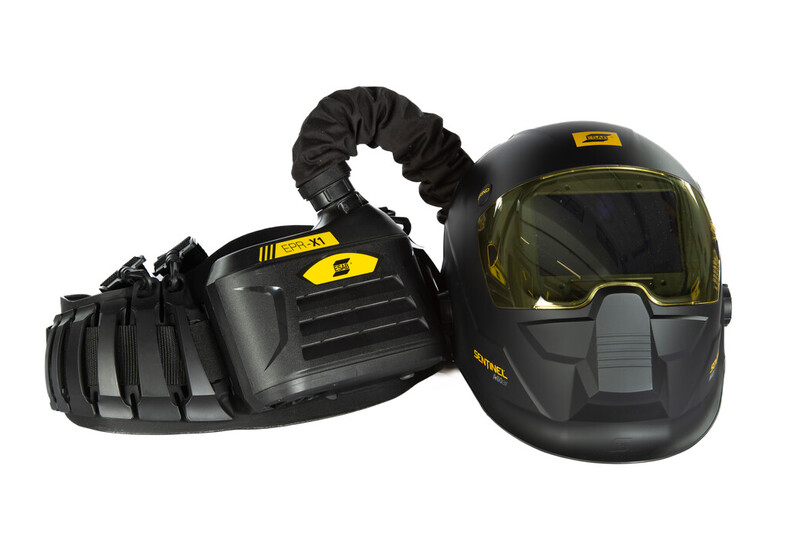
HSE recommends use of RPE where engineering controls are not adequate to control exposure to all welding fumes. Air fed welding helmets equipped with PAPR provide another layer of protection to the welder from welding fume. Powered Air Purifying Respirator (PAPR) is a type of RPE commonly used in welding to protect the wearer from hazardous fumes, gasses, and particles generated during the welding process.

